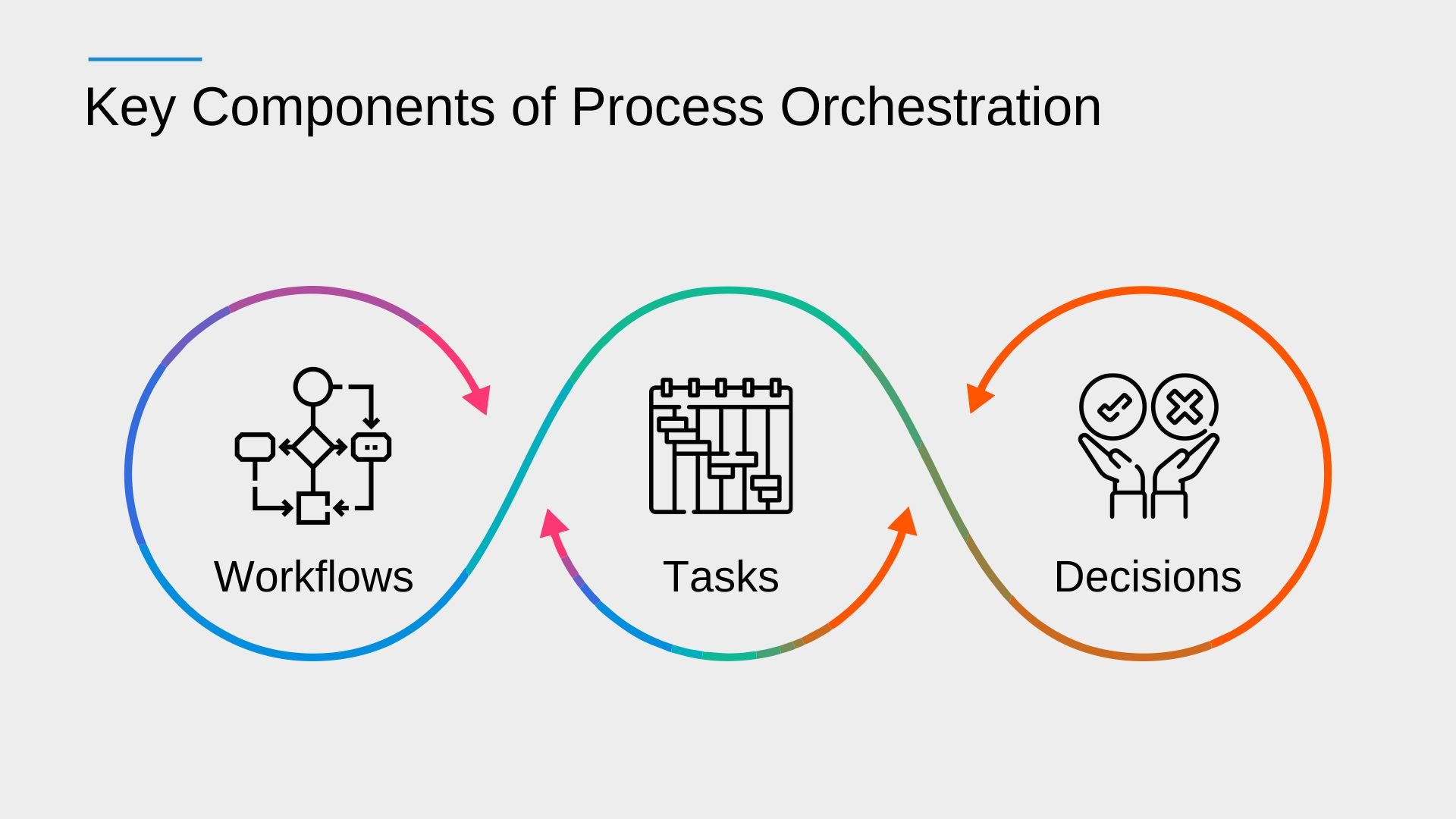In an era where efficiency and speed are the hallmarks of successful businesses, it's essential to understand the mechanisms that can drive these factors. One such mechanism is process orchestration. But what exactly is process orchestration?
This article aims to demystify process automation for you. While offering insights into what it is, how it works, and why it is becoming a game-changer in the business world.
Understanding Process Orchestration
Process orchestration refers to the automated arrangement, coordination, and management of complex computer systems, applications, and services. It's about optimizing and managing workflows in a way that promotes efficiency and reduces the likelihood of errors. Essentially, it involves directing multiple automated tasks to work together to execute a larger workflow or process.
Although process orchestration might sound similar to process automation, they are fundamentally different. While automation is about replacing manual tasks with automated ones, orchestration takes it a step further. It looks at the bigger picture, managing a series of automated tasks to ensure they function together seamlessly in a defined workflow.
Key Components of Process Orchestration

At the heart of process orchestration are three key elements: workflows, tasks, and decisions. Workflows represent the overall process, which consists of several tasks that need to be completed in a particular order. Each task is a specific action or a series of actions, while decisions determine the next step in a workflow depending on the outcome of a task.
These components work together to create a well-orchestrated process. The orchestration platform controls the execution of tasks, ensures they occur in the correct order, and makes decisions based on predefined rules. This synergy between workflows, tasks, and decisions is what makes process orchestration efficient and effective.
How Process Orchestration Works
Process orchestration operates in various stages, starting with initiation. This involves defining the workflow and the tasks within it and setting the rules for decision-making. Once the process is initiated, the orchestration platform takes over, executing each task in the correct order.
After the initiation, the execution stage begins. Here, each task is performed according to the set rules and sequence. The orchestration platform manages this stage, ensuring that tasks are executed accurately and efficiently. After execution, the process moves to the monitoring stage, where the performance of the tasks is tracked. The final stage is completion, where the outcome of the process is evaluated.
Benefits of Process Orchestration
One of the main benefits of process orchestration is the increased efficiency it brings to business operations. By automating and coordinating tasks, businesses can significantly reduce the time and resources spent on routine processes. This not only leads to cost savings but also allows businesses to focus on strategic initiatives that drive growth and innovation.
Furthermore, process orchestration can significantly reduce the risk of errors. By managing and coordinating tasks automatically, the chances of mistakes happening due to human error are minimized. Moreover, process orchestration also provides better visibility into business operations, enabling businesses to monitor and optimize their processes effectively.
Implementing Process Orchestration in Your Business
If you're considering implementing process orchestration in your business, the first step is choosing the right tools. There are several process orchestration tools available in the market that cater to different needs and budgets. The choice would depend on your business size, the complexity of your processes, and your specific requirements.
The next step is identifying the processes that could benefit from orchestration. Not all processes are suitable for orchestration, and some may need to be restructured or redefined before they can be orchestrated. Finally, it's important to train your staff on the use of process orchestration tools. This will ensure a smooth transition and enable your team to manage and monitor the orchestrated processes effectively.
The Future of Process Orchestration
Influenced by advancements in technology, process orchestration is continuously evolving. Technologies such as Artificial Intelligence and Machine Learning, for instance, are being integrated into process orchestration tools to make them smarter and more efficient. These technologies can analyze large amounts of data, learn from them, and make intelligent decisions, further enhancing the effectiveness of process orchestration.
Moreover, process orchestration is expected to reach new levels of complexity and efficiency through cloud computing and the Internet of Things (IoT). These technologies can enable more connected and coordinated processes across different devices and platforms. The future of process orchestration looks bright, with endless possibilities for increased efficiency and innovation.
Conclusion.
Process orchestration plays a crucial role in driving efficiency and reducing errors in business operations. By managing and coordinating various tasks within a workflow, it allows businesses to save time and resources, enabling them to focus more on strategic growth and innovation.
As technology continues to evolve, so too will process orchestration. With advancements in AI, Machine Learning, and cloud computing, the future of process orchestration promises to be smarter, more efficient, and more interconnected. Embracing process orchestration is not just about keeping up with the times; it's about staying ahead of them and propelling your business toward success.
